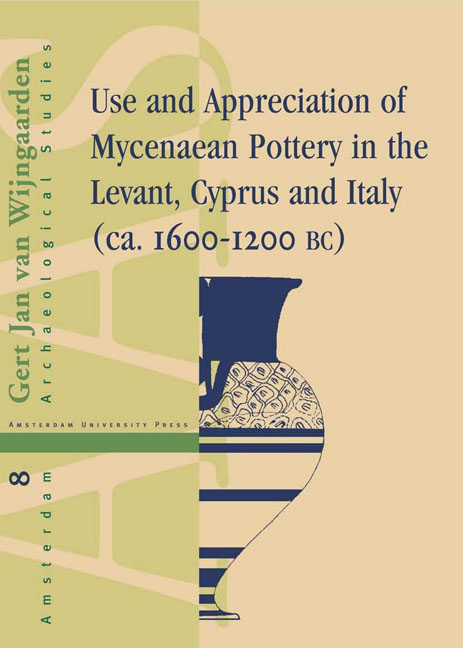18 - The Cultural significance of Mycenaean pottery in Italy 249
Published online by Cambridge University Press: 10 February 2021
Summary
INTRODUCTION
The distribution of Mycenaean pottery in Italy has been subdivided by Lucia Vagnetti into three broad chronological periods: LH I-LH II, LH IIIA-LH IIIB and LH IIIB-LH IIIC. Even though all three sites which have been discussed in the preceeding chapters cover more than one of these periods, the Mycenaean pottery at each of them is concentrated in specific periods. Most of the Mycenaean pottery at Lipari belongs to the early period (LH I-LH IIIA1); at Thapsos most Aegean vessels can be assigned a LH IIIA2-LH IIIB date, while Broglio yielded predominantly Mycenaean material from LH IIIB and later. The differences and similarities between these sites, therefore, may be the result of chronological developments. They may also be caused by the different nature of the archaeological remains at these three sites.
MYCENAEAN REPERTOIRE
The large quantities of Mycenaean pottery at Lipari and Broglio are paralleled only at a few other sites in the central Mediterranean. More than 340 Mycenaean sherds have been published from the island of Vivara (site no. 342), while the excavations at Scoglio del Tonno in Taranto (site no. 314) produced more than 150 Mycenaean finds. In Nuraghe Antigori (site no. 348), where Bronze Age levels have been reached in a limited number of rooms, more than forty Mycenaean finds were made, but over 100 Mycenaean sherds were found in a dump of clandestine excavators. Two trenches of limited extent at Termitito (site no. 316) yielded more than forty Mycenaean sherds. The latest Mycenaean find on Vivara dates to LH IIIA1 and the sites on this island should be grouped with Lipari in Vagnetti's first phase of the import of Mycenaean pottery in Italy. Scoglio del Tonno, instead, has produced substantial amounts of Aegean pottery in LH IIIA style and later, and this site belongs to Vagnetti's second and third phases. As in Broglio di Trebisacce, most Mycenaean finds at Termitito and Nuraghe Antigori are in LH IIIB and LH IIIC style, and these sites belong to the third period. Obviously, in each chronological phase of the Mycenaean contacts with Italy, only very few sites imported large quantities of this material.
- Type
- Chapter
- Information
- Use and Appreciation of Mycenaean Potteryin the Levant, Cyprus and Italy (1600-120O BC), pp. 249 - 260Publisher: Amsterdam University PressPrint publication year: 2002



